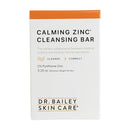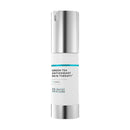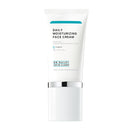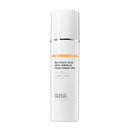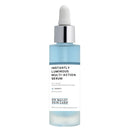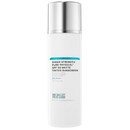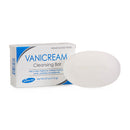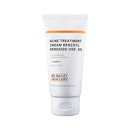What is a tan?

What is a tan? What happens inside your skin when you tan and is it safe? Actually, tanning is your skins way of trying to protect itself from ultraviolet rays. UV rays are something that can harm your skin and your skin has a mechanism to try to shield itself from the harm. Sadly, that mechanism is not 100% successful. Also, not all tans are the same or block UV rays equally well. Understanding the timing and process of tanning will help you understand why you sometimes sunburn when you don't expect it.

This post on tanning is Part 2 of my Sunburn Series. In Part 1 of the Sunburn Series I talked about which UV rays cause sunburns and what happens inside your skin when you get one.
To really understand what happens to your skin during a sunburn you need to understand what happens when you get a tan.
A tan is what your skin does to try to protect you from harmful UV rays - BUT not all tans actually give you sun protection! There are 2 types of tans and they relate to the 2 types of UV rays, UVA and UVB. They create completely different types of tan in your skin and the tans form at different times. Understanding this will keep you from falling for some of the common tanning myths.
What is a tan?
A tan happens due to the presence of melanin in your skin secondary to UV ray exposure. But not every tan means your skin has more melanin and not all 'tans' happen at the same time after UV exposure.
First, you need to know that your skin’s ability to tolerate the sun's UV ray exposure is determined by how much pigment your skin can make and how quickly it makes it.
Your Fitzpatrick Skin Type:
Skin Types
I Always burns, never tans
II Always burns and tans very little
III Burns somewhat but tans gradually
IV Burns a little but tans easily (olive skin)
V Rarely burns and tans easily (brown skin)
VI Never burns, tans darkly black (dark brown skin)

Next, you need to understand that there are 2 types of tans.
What are the 2 types of sun tanning?
There are 2 types of tanning that occur after UV exposure and knowing this is important because one makes melanin (to give you a very tiny bit of extra sun protection) and one doesn't.
Not all tans create increase skin melanin to help reduce damage from your next sun exposure!
Melanin is your skin pigment and it is contained in little granules that form and are held in your skin to give you tan color. It's made by specialized skin cells called melanocytes. The melanin granules spread out in the top of your living skin layer where you've been exposed to the UV rays. Even a generous layer of pigment granules in your skin from tanning only gives you a little extra sun protection, and for your skin to make that protection takes time.
The two type of tanning response to UV light are Immediate Pigment Darkening and Delayed Pigment Darkening.
1. Immediate Pigment Darkening
- This is immediate tanning
- The tan happens because your skin redistributes the pigment that was already in your skin. No new melanin granules are made.
- It happens right after UVB exposure and/or UVA exposure (UVA is what's in tanning beds)
- The tan starts to occur right away and is maximal after just a few hours
- This UVA and/or UVB exposure results in free radicals which damage your skin's DNA
-
This tan gives absolutely NO protection from the sun. Positively none! Not even a little!!! So, you can’t use tanning beds to 'get a little base tan' and protect your skin for that sunny vacation.

Tanning bed tans give you NO increase in sun tolerance and don't protect you from sunburn. - Dr. B
This type of UV exposure gives your rough and dull skin. That's because it stimulates your skin to increase in the thickness of the dead skin cell layer of your skin (stratum corneum) and that create rough skin texture! It's your skin's way of trying to protect itself because a thick dead skin cell layer does give a little sun protection (think palms and soles which are the extreme and have really thick dead skin cell layers). Unfortunately, we like to exfoliate off these same dead skin cells because they make skin look dull, dry, and leathery. It's one of those 'you can't have your cake and eat it too' situations; slight sun protection and dull leathery skin, or exfoliated soft skin and no sun protection from that tan. Anyone who's read my blog before knows what I'd choose!
2. Delayed Pigment Darkening
- This is delayed tanning that takes time to form.
- It only happens from exposure to UVB rays! You can't get it from the UVA in tanning beds. Remember, UVB is the same sun ray that cause sunburn so tanning is part of the continuum of events that culminates in a sunburn.
- It begins 2 to 3 days AFTER exposure, becoming maximal at 10 to 14 days (2 weeks!).
- It happens WHEN your skin cell’s DNA gets damaged by the UVB so the presence of a tan means DNA has been damaged!
The tan occurs because your skin actually makes more melanin pigment granules and spreads them out in the living layer of your skin. This means that it does give you a small amount of sun protection, but at the expense of DNA damage.
A tan means DNA damage has occurred in your skin, it's sad but true. Dr. B
Remember, tans are temporary because these melanin granules grow up and out of your skin as your cells shed. They give your skin a nominal SPF that is nowhere near the SPF 30 sunscreens that we recommend.
Tanning causes you to have rough and dull skin
Like the immediate tan, this type of exposure also causes an increase in the dead skin cell layer of your skin (stratum corneum). This thickening gives a little sun protection but it’s also the layer we exfoliate to keep skin looking attractive.
In my last post of this Sunburn Series I'll give you advice for what you should and shouldn't do to help your skin heal if, unfortunately, you have a sunburn. Click here to see How to Treat a Sunburn. Very sad......
What is the best way to prevent sun damage to your skin?
You need trustworthy sun protection supplies? This means sunscreens and tools for sun protection. I'm a pro at this because I know how much it matters to your skin, my patients' and my own skin. Click here for my collection of Sun Protection Products. These are the tools I use to keep my fair California skin healthy. My patients have put these products through rigorous real-life testing too. They work! Please don't be tempted to get a tan, it never ends well for your skin.
Reference:
Miyamura Y, Coelho SG, Schlenz K, Batzer J, Smuda C, Choi W, Brenner M, Passeron T, Zhang G, Kolbe L, Wolber R, Hearing VJ. The deceptive nature of UVA tanning versus the modest protective effects of UVB tanning on human skin. Pigment Cell Melanoma Res. 2011 Feb;24(1):136-47.
Andrews' Diseases of The Skin, 11th Edition, William D. James, MD, Timothy Berger, MD and Dirk MD Elston, MD, Saunders 2011, pages 24-25.
Photos: Thanks and Gratitude to Alan Donque and Evil Erin


